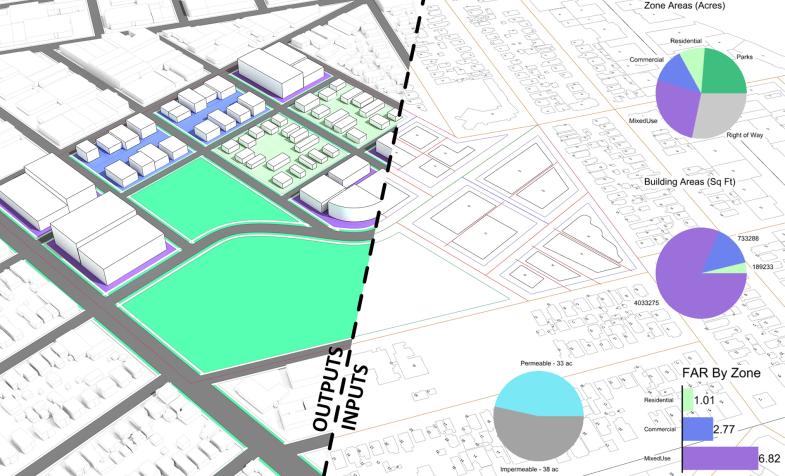Computational Design in Action
Computational Design in Action
Computational design is becoming increasingly common in today’s architectural practice. In the 1990s and early 2000s, computational design focused on the design and construction of complex geometries, and this reputation often proceeds the term. However, designers are now experimenting with these tools, using them to measure, track, and analyze project data in real time.
When using computational design to access live project data and analytics, designers are made explicitly aware of project attributes that they may have otherwise overlooked. The data associated with these attributes can provide immediate insights into how design decisions shape the project quantitatively as well as qualitatively. These feedback loops can assist designers in deriving new insights from their work and the creation of new design knowledge.

Computational Design as an Urban Planning Tool
This approach to computational design is the basis for a set of computational tools recently created by Cuningham Group’s Research Specialist Dustin Schipper for the firm’s Urban Design and Landscape Architecture team. The tools use the modeling software Rhino and its Grasshopper plugin.
Because of its nature, urban planning lends itself to a working process where qualitative and quantitative decisions are considered simultaneously and in the context of one another. Simply put, urban planning is naturally suited for the use of computational design tools.
Despite the numerical, rule-based zoning codes and regulations that govern the form of the built environment, designers work hard to create compelling and innovative places and designs. The conventional way of working is to design plans and iterations, then, once they are finished, manually enter their data into complicated spreadsheets to discover how close to the target the design turned out. Not only is the conventional approach labor intensive, but the qualitative and quantitative portions are delineated by a clear line of separation. By using computational design to bring project metrics into the same workspace as design thinking and automating their calculations, designers can immediately appreciate the impacts of their decisions, experiment with different approaches to meeting their target metrics, and use time that would have previously been spent on data entry for design thinking and creative problem solving.
Altering the Design Process
This Urban Planning Toolkit has the potential to reshape the conventional design process. Not only do the automated modeling capabilities of computational design dramatically increase the speed with which a designer can work, but the analytics and immediate design feedback help them to understand the performance impact of each design decision.
The architecture and design industry is beginning another shift in the tools and technologies that support and enable design practice. Just as Computer Aided Drafting (CAD) software created a monumental shift in how designers practiced 40 years ago, the increasing intelligence and customizability of today’s design platforms are expanding the capabilities of designers again. As the possibilities for computational design continue to expand, design firms must continue to find new and innovative ways to exercise these emerging and powerful capabilities.
